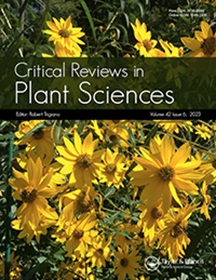药用植物生物学模型系统丹参中生物活性化合物的生物合成及其调控机制
IF 6
2区 生物学
Q1 PLANT SCIENCES
引用次数: 17
摘要
摘要丹参(Salvia miltiorrhiza)是鼠尾草科丹参属植物中最著名的一种,具有很高的经济、学术和药用价值。大约在公元前二世纪,它被记录为一种传统的中医材料,后来在许多其他古籍中。丹参在临床上可单独使用或与其他草药混合治疗心脏和心血管疾病,并有益于许多其他疾病的管理。在过去的30年里,丹参作为药用植物生物学的一个模式系统得到了广泛的研究。随着四种丹参系全基因组序列和大量转录组、sRNAome和代谢组数据的获得,对丹参酮、酚酸类、黄酮类、烯丙基醌类等生物活性物质的生物合成及其调控机制的研究取得了很大进展。本文综述了近年来在丹参生物活性物质合成途径方面的研究进展。综述了生物因子和非生物因子、植物激素、转录因子和非编码rna对生物活性化合物生物合成的影响。综述了不同生物合成途径之间的相互作用和协调机制,以及各种生物活性化合物的代谢工程和合成生物学研究进展。本文章由计算机程序翻译,如有差异,请以英文原文为准。
Biosynthesis and Regulatory Mechanisms of Bioactive Compounds in Salvia miltiorrhiza, a Model System for Medicinal Plant Biology
Abstract Salvia miltiorrhiza is one of the most well known species in the genus Salvia of the Lamiaceae with great economic, academic and medicinal value. It was recorded as a traditional Chinese medicine material first in about the second century BC and later in many other ancient books. Salvia miltiorrhiza can be clinically used alone or mixed with other herbs to treat heart and cardiovascular diseases and is beneficial for management of many other diseases. In the last 30 years, S. miltiorrhiza has been studied intensively as a model system for medicinal plant biology. With the available of whole genome sequence of four S. miltiorrhiza lines and a large number of transcriptome, sRNAome and metabolome data, great progresses have been made in biosynthesis and regulatory mechanisms of bioactive compounds, such as tanshinones, phenolic acids, flavonoids, and prenylquinones. In this review, the recent results in the biosynthetic pathways of bioactive compounds in S. miltiorrhiza were summarized. The effects of biotic and abtiotic factors, plant hormones, transcription factors and noncoding RNAs on bioactive compound biosynthesis were overviewed. The mechanism of cross-talk and coordination among different biosynthetic pathways and the progress of metabolic engineering and synthetic biology for various bioactive compounds are also reviewed and discussed.
求助全文
通过发布文献求助,成功后即可免费获取论文全文。
去求助
来源期刊
CiteScore
12.90
自引率
1.40%
发文量
15
审稿时长
>12 weeks
期刊介绍:
Critical Reviews in Plant Sciences focuses on presenting in-depth and up-to-date reviews of timely and/or cutting-edge subjects in the broad discipline of plant science, ranging from molecular biology/biochemistry through the areas of cell biology, plant pathology and physiology, genetics, classical botany, and ecology, to practical agricultural applications. Articles in the journal provide an up-to-date literature base for researchers and students, pointing the way towards future research needs. The journal is also a significant source of credible, objective information to aid decision makers at all levels.

 求助内容:
求助内容: 应助结果提醒方式:
应助结果提醒方式:


